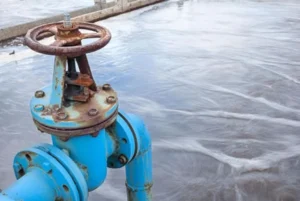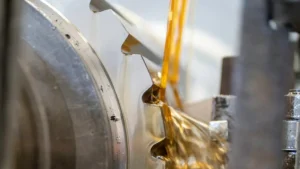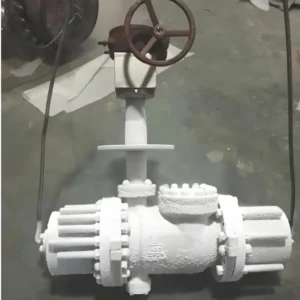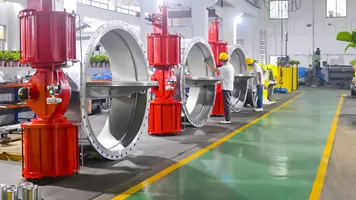In the high-stakes realm of high-pressure oil and gas transportation, where system integrity directly impacts operational safety, environmental protection, and project profitability, the selection of pipeline valves becomes a critical engineering decision. Among the various valve configurations, API 6D trunnion mounted ball valves stand out as a benchmark of reliability, designed to thrive in extreme conditions—from subsea depths to Arctic permafrost, and from sour gas reservoirs to high-pressure transmission networks. This article explores the technical nuances, performance metrics, and real-world applications of these valves, integrating insights from Tianyu Valves’ decades of expertise in precision engineering for the oil and gas sector.
I. Decoding API 6D: The Pinnacle of Pipeline Valve Standards
The American Petroleum Institute’s API 6D specification is more than a set of guidelines—it is a globally recognized framework that defines the minimum requirements for valves used in pipeline systems transporting oil, gas, and related products. Unlike general industrial valve standards, API 6D is tailored to the unique challenges of pipeline operations, where valves must perform flawlessly under sustained high pressure, temperature fluctuations, and corrosive media.
A. Core Mandates of API 6D
API 6D’s rigor is evident in its comprehensive coverage of design, manufacturing, and testing protocols. Key requirements include:
- Pressure-Temperature Ratings: The standard specifies pressure classes from Class 150 (20 bar) to Class 2500 (420 bar), with temperature ranges spanning -29°C to 121°C for carbon steel valves, and extended ranges (-196°C to 538°C) for specialized alloys. This ensures compatibility with everything from cryogenic LNG pipelines to high-temperature steam-injection systems.
- Material Integrity: Valves for sour service (containing H₂S) must comply with NACE MR0175/ISO 15156, using materials resistant to sulfide stress cracking (SSC) and hydrogen-induced cracking (HIC). For example, Tianyu Valves’ sour service trunnion valves utilize 22Cr duplex stainless steel (UNS S31803) with controlled sulfur content (<0.003%) to meet these Strict requirements.
- Testing Protocols: API 6D mandates a series of destructive and non-destructive tests, including:
- Hydrostatic shell test (1.5× rated pressure for 60 seconds)
- Seat leakage test (0.1× rated pressure with maximum allowable leakage per ISO 5208 Class VI: 0.15 mL/min for sizes ≤DN100)
- Fire-safe test per API 607 (7th edition), where valves must maintain pressure integrity after a 30-minute fire exposure at 750–800°C.
B. API 6D vs. Other Valve Standards
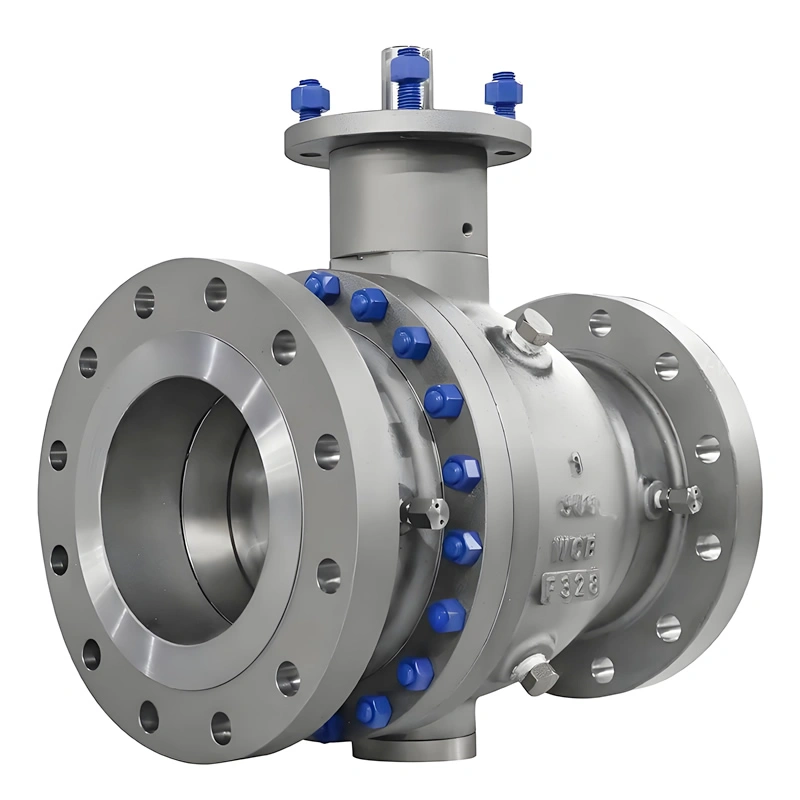
DN100 Class 300 Carbon Steel 2PC Trunnion Top Flange Ball ValveTo appreciate API 6D’s specialization, it is useful to contrast it with related standards:
| Standard | Primary Focus | Key Difference from API 6D |
|---|---|---|
| API 608 | Industrial ball valves for general service | Does not require pipeline-specific features like full bore design or bidirectional sealing. |
| ASME B16.34 | Pressure-temperature ratings for valves | Focuses on pressure-temperature limits but lacks API 6D’s pipeline-centric testing requirements. |
| ISO 14313 | Subsea pipeline valves | More specialized for subsea applications, with additional requirements for external pressure resistance. |
API 6D’s emphasis on pipeline operability—including features like full-bore design (to minimize pressure drop) and rapid actuation (for emergency shutdowns)—makes it irreplaceable for high-pressure oil and gas networks.
II. The Trunnion Advantage: Structural Excellence in High-Pressure Environments
Trunnion mounted ball valves differ fundamentally from their floating counterparts, with a design optimized to eliminate the weaknesses that plague other valve types under high differential pressure.
A. Anatomy of a Trunnion Mounted Ball Valve
The defining feature of a trunnion design is the fixed ball—anchored by upper and lower trunnions (shafts) that prevent axial movement. This structure distributes pressure loads across the valve body rather than concentrating them on the seats, a critical advantage in high-pressure applications. Key components include:
- Trunnion Support System: The upper trunnion connects to the actuator, while the lower trunnion (often equipped with a bearing) stabilizes the ball. Tianyu’s trunnions are precision-machined from forged alloy steel (ASTM A182 F6a) and coated with nickel-phosphorus to reduce friction and wear.
- Dual Sealing Mechanism: Metal-to-metal seats (typically 316 stainless steel or Stellite® 6) provide primary sealing, with spring-loaded PTFE or graphite secondary seals to compensate for thermal expansion. This “double block and bleed” (DBB) configuration allows for safe isolation and pressure relief.
- Cavity Relief Ports: A critical safety feature, these ports prevent pressure buildup in the valve cavity (between the ball and body) caused by thermal expansion of trapped fluid, a common failure point in floating ball valves.
B. Performance Metrics: Why Trunnion Design Excels
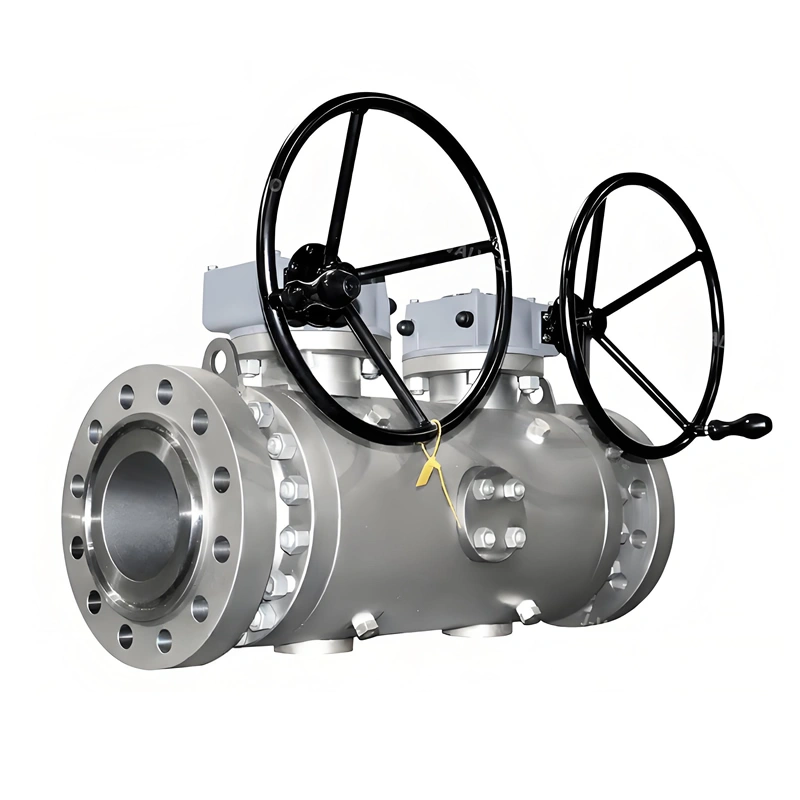
In high-pressure scenarios (≥Class 600/100 bar), the trunnion design outperforms alternatives in three key areas:
- Pressure Handling: By fixing the ball, trunnion valves eliminate the “seat loading” issue in floating valves, where high pressure pushes the ball into the downstream seat, increasing wear and actuation torque. Tianyu’s 36-inch Class 1500 trunnion valves, for example, handle 250 bar pressure with operating torque 30% lower than comparable floating valves.
- Bidirectional Sealing: Unlike gate valves, which seal in one direction, trunnion ball valves provide bubble-tight sealing (≤0.1 cm³/min leakage) in both flow directions, critical for reversible pipeline systems (e.g., offshore loading/unloading lines).
- Longevity: The fixed ball reduces seat erosion, extending service life. Field data from a Middle Eastern gas pipeline showed Tianyu trunnion valves operating continuously for 8 years without seat replacement, compared to 3–4 years for floating valves in the same service.
III. Applications: Where API 6D Trunnion Valves Prove Indispensable
The versatility of API 6D trunnion mounted ball valves makes them the preferred choice for the most demanding oil and gas pipeline applications.
A. High-Pressure Transmission Pipelines
Onshore natural gas transmission networks (operating at 80–100 bar) require valves that minimize pressure drop and ensure tight shutoff to prevent methane emissions. Trunnion valves’ full-bore design (with bore size equal to the pipeline diameter) reduces energy loss by up to 40% compared to reduced-bore gate valves. Tianyu’s DN500 (20-inch) Class 900 trunnion valves, installed in a Central Asian gas pipeline, achieved a pressure drop of just 0.3 bar at 10 m³/s flow rate—well below the project’s 0.5 bar limit.
B. Offshore and Subsea Systems
Offshore platforms and subsea pipelines present unique challenges: saltwater corrosion, limited maintenance access, and extreme pressures (up to 300 bar for deepwater fields). API 6D trunnion valves for these applications feature:
- Corrosion Resistance: Super duplex stainless steel (UNS S32750) bodies with passive film treatments to resist pitting in 3.5% NaCl solutions (simulating seawater).
- Subsea Actuation: Hydraulic actuators with fail-safe springs (to close on power loss) and corrosion-resistant coatings (e.g., fusion-bonded epoxy with 1000-hour salt spray resistance per ASTM B117).
- Deepwater Ratings: Tianyu’s subsea trunnion valves are certified for 3000-meter water depth, with external pressure testing to 300 bar (equivalent to 3000m depth).
C. Sour Service Environments
Oil and gas reservoirs with H₂S concentrations >500 ppm (sour service) demand valves resistant to SSC. API 6D trunnion valves for these applications undergo rigorous testing:
- HIC Testing: Per NACE TM0284, samples are exposed to H₂S-saturated brine for 96 hours with no cracking.
- SSC Testing: Per NACE TM0177, specimens are stressed to 80% of their yield strength in H₂S environments, with no failure.
A case study: Tianyu’s Class 1500 trunnion valves in a Canadian sour gas field (H₂S = 20,000 ppm) have operated for 5 years without corrosion-related failures, outperforming previous valves that required replacement every 2 years.
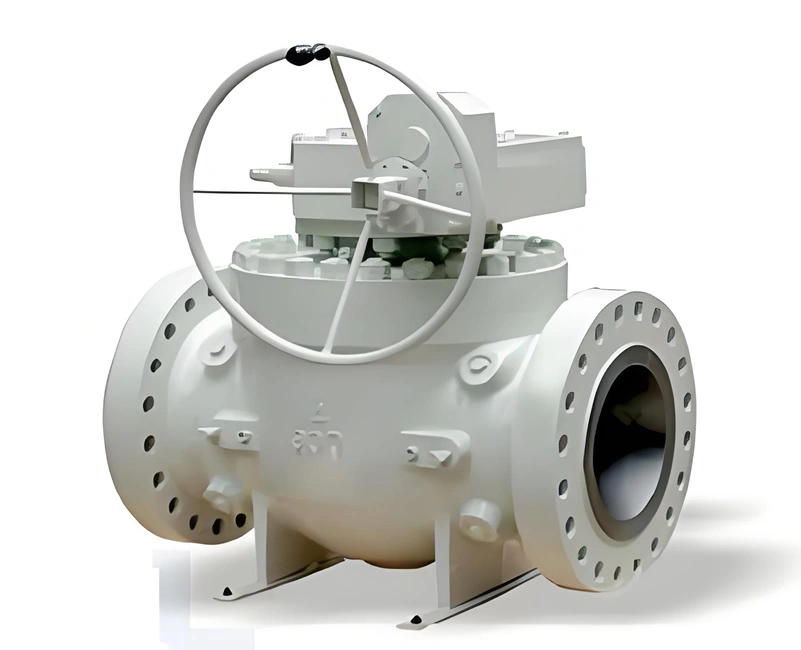
IV. Technical Innovations: Pushing the Boundaries of Performance
Leading manufacturers like Tianyu Valves continuously innovate to address emerging challenges in high-pressure pipeline systems.
A. Advanced Materials
- Cryogenic Alloys: For Arctic pipelines (-50°C to -60°C), Tianyu uses nickel-based alloys (Inconel 718) for trunnions and balls, which maintain impact strength (>20 J at -60°C, per ASTM E23) to prevent brittle fracture.
- Ceramic Coatings: In sand-laden oil pipelines, tungsten carbide (WC) coatings on ball surfaces (with 800 HV hardness) reduce erosion by 70% compared to uncoated stainless steel.
B. Smart Valve Technology
Modern pipeline systems require real-time performance data. Tianyu’s intelligent trunnion valves integrate:
- Sensors: Wireless torque sensors (±2% accuracy) and temperature probes (range: -50°C to 200°C) to monitor operating conditions.
- IoT Integration: Data transmitted via LoRaWAN to cloud platforms, enabling predictive maintenance. In a Southeast Asian pipeline, this system detected abnormal torque increases (indicating seat wear) 6 weeks before a potential failure, allowing scheduled maintenance.
C. Fire-Safe Engineering
API 607-certified trunnion valves feature a fire-safe design where:
- Non-metallic seals (e.g., PTFE) are backed by metal seats.
- Stem packing uses graphite rings (stable up to 650°C) to prevent stem leakage during fires.
Tianyu’s fire-safe trunnion valves passed API 607 testing with zero leakage after 30 minutes of fire exposure, maintaining 100 bar pressure integrity.
V. Selection and Sourcing: Criteria for Reliable Procurement
Choosing the right API 6D trunnion valve supplier is as critical as the valve design itself. Key considerations include:
A. Manufacturing Capabilities
A reputable supplier should control the entire production process, from forging to testing. Tianyu’s integrated facilities include:
- Forging: In-house closed-die forging to eliminate porosity in valve bodies (ultrasonic tested per ASTM A388).
- Machining: 5-axis CNC machines with ±0.005mm tolerance for ball-seat mating surfaces (critical for tight sealing).
- Testing: Automated hydrostatic test benches (up to 1000 bar) and helium leak detectors (sensitivity: 1×10⁻⁹ Pa·m³/s).
B. Certification and Traceability
- API 6D Monogram: Verify that the supplier’s certification covers the specific valve size, pressure class, and material. Tianyu’s API 6D certificate (API-6D-0555) includes sizes DN50–DN1200 (2–48 inches) and pressure classes up to 2500.
- Material Traceability: Full material certificates (MTRs) with heat numbers for all components, from the valve body to the stem, enabling end-to-end lifecycle tracking.
C. Customization Expertise
High-pressure projects often require tailored solutions. Tianyu’s engineering team specializes in:
- Special End Connections: Custom flanges (e.g., API 6A wellhead flanges) or butt-weld ends (per ASME B16.25).
- Actuator Integration: Compatibility with leading actuators (Rotork, Emerson, AUMA) with factory-mounted and tested assemblies.
- Low-Torque Designs: Optimized ball and seat profiles to reduce actuation force, ideal for remote, unmanned installations.
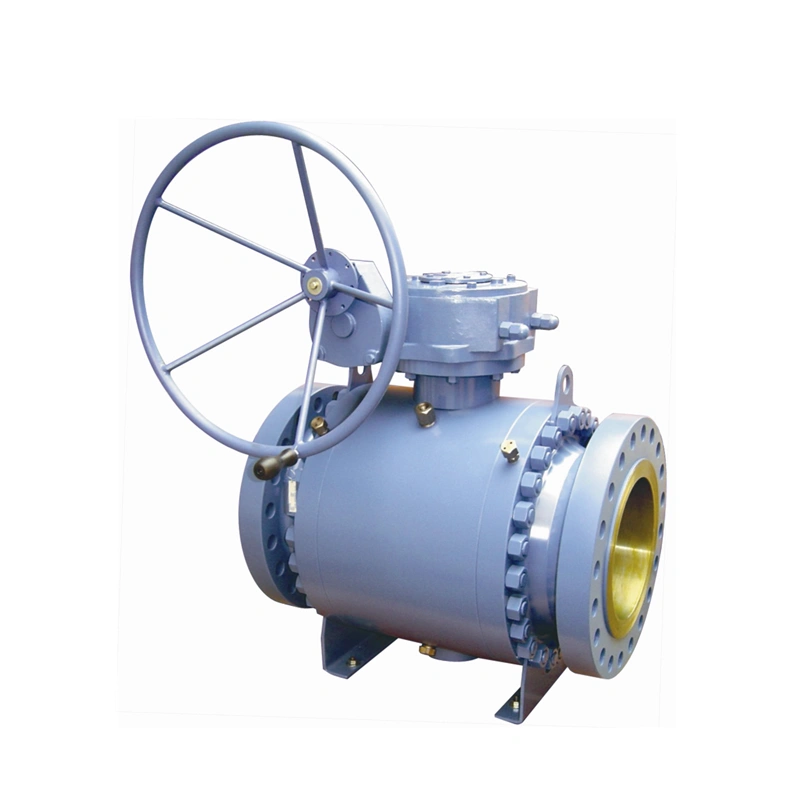
VI. Maintenance and Lifecycle Management
Proper maintenance ensures API 6D trunnion valves achieve their 20+ year design life in high-pressure service.
A. Routine Inspection Checklist
- Visual Inspection: Check for external corrosion, flange gasket leaks, and actuator damage.
- Operational Testing: Verify valve stroke (0–90° for ball valves) and measure operating torque (should not exceed 110% of factory values).
- Leakage Monitoring: Use ultrasonic detectors to check for seat leakage (typical acceptable level: <0.1 sccm).
B. Preventive Maintenance
- Lubrication: Inject food-grade grease (for potable service) or high-temperature grease (for >150°C) into trunnion bearings and stem packing every 6 months.
- Seat Replacement: Replace seats after 10,000 cycles or if leakage exceeds Class VI limits. Tianyu provides pre-assembled seat kits with factory-set spring loads for easy field replacement.
- Cavity Pressure Relief: Use bleed ports to relieve trapped pressure before maintenance, a step critical to preventing sudden pressure releases.
C. After-Sales Support
A reliable supplier offers global service capabilities. Tianyu’s after-sales network includes:
- 24/7 technical support via phone and email.
- Field service engineers trained in API 6D valve maintenance, with response times <72 hours for urgent issues.
- Spare parts inventory in regional hubs (Houston, Singapore, Dubai) to minimize downtime.
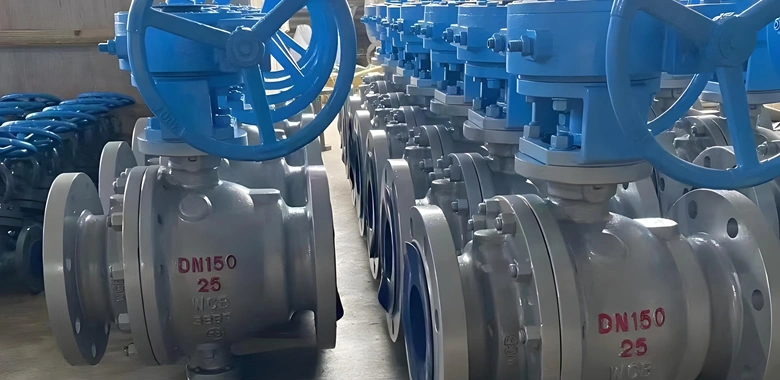
VII. Future Outlook: Evolving with the Oil & Gas Industry
As the industry adapts to energy transition and digitalization, API 6D trunnion mounted ball valves are poised to evolve in three key areas:
- Net-Zero Compatibility: Development of low-carbon manufacturing processes, such as using recycled alloys and renewable energy in production. Tianyu aims to reduce valve lifecycle carbon emissions by 30% by 2030.
- Autonomous Operation: Integration of AI-driven predictive analytics to enable self-diagnosing valves that adjust sealing pressure dynamically based on flow conditions.
- Extreme Environment Performance: Advances in materials (e.g., ceramic matrix composites) to extend service life in ultra-high-pressure (500+ bar) and high-temperature (600°C+) applications, critical for hydrogen and carbon capture pipelines.
API 6D trunnion mounted ball valves represent the pinnacle of valve engineering for high-pressure oil and gas pipelines, combining API 6D’s rigorous standards with the structural advantages of trunnion design. Their ability to handle extreme pressures, corrosive media, and harsh environments—coupled with innovations in materials and smart technology—makes them indispensable for modern pipeline systems.


